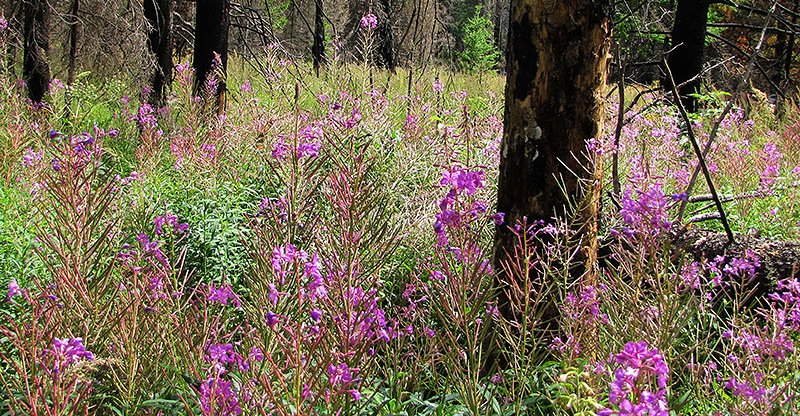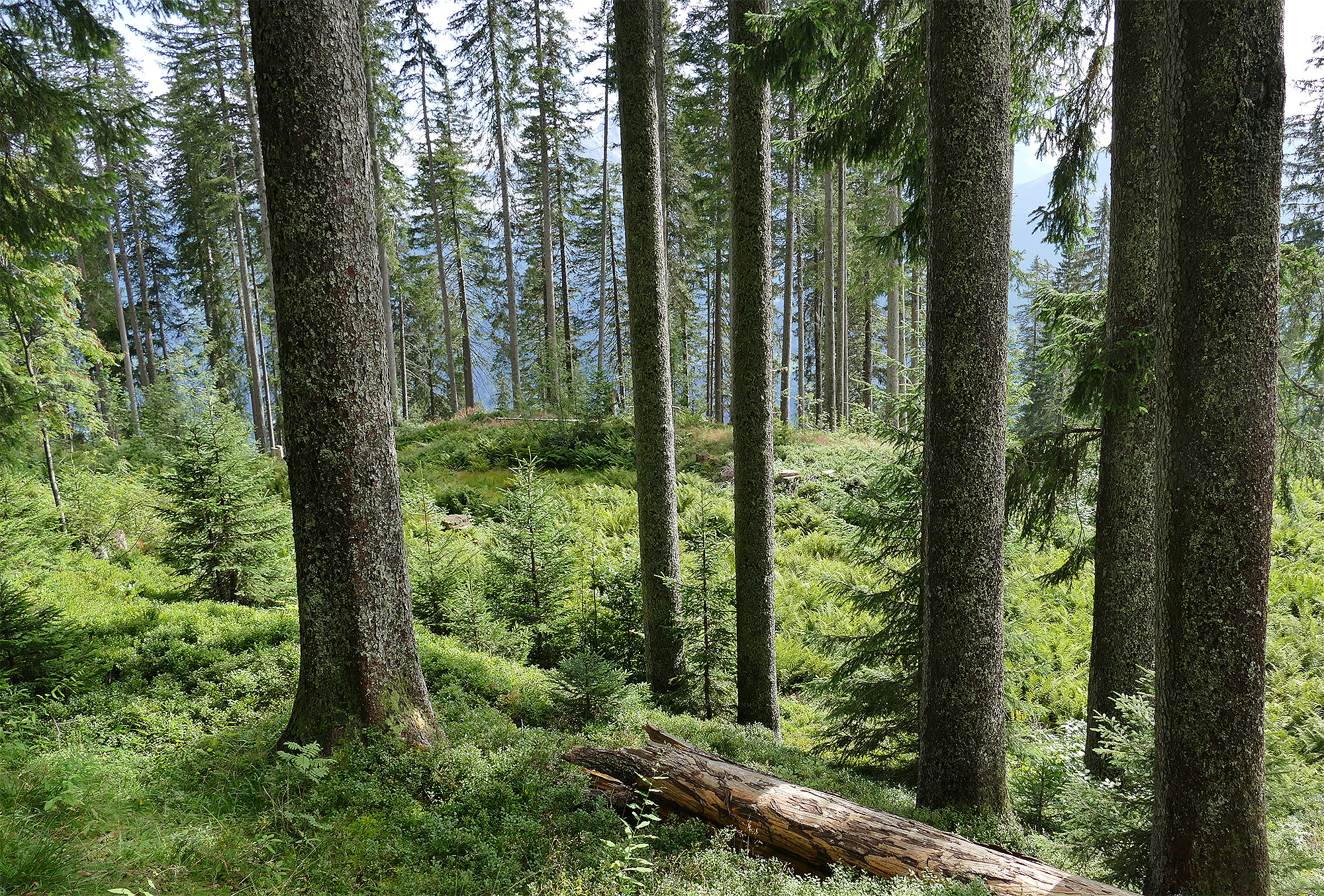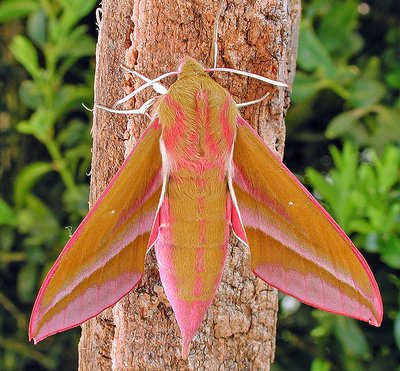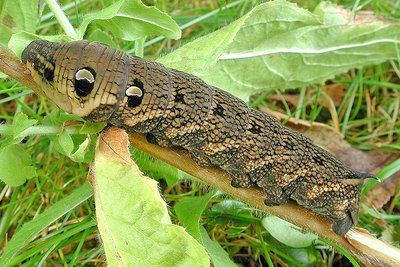The willowherb (Epilobium angustifolium) is usually well known to forestry professionals and its intense pink flowers are quite attractive. It is also particularly well loved by a number of moth species.
The willowherb - omnipresent in forests

Fig. 1: The great willowherb on a burned area in the dark taiga / Mongolia (Picture: H. Bußler).
The willowherb, also known as fireweed - is circumpolar in its distribution in northern Europe, northern Asia and north America. It grows on moist, nutrient and humus rich loamy soils as a pioneer species and is a bioindicator of mineralization. It prefers:
- the edges of clear cuts,
- forest openings,
- hiking paths,
- wind-throw areas,
- dumping areas,
- perennial meadows, or lastly,
- shorelines.
The unbranched, upright stems can be as high as a person and the undersides of its narrow lanceolate leaves are blue-green in color. In July and August the flowers are pollinated by insects and thus make a good "pasture" for bees. The elongated fruit capsules contain tiny seeds with a tuft of hair. Since roe deer have a high preference for the protein rich leaves of the willowherb this plant has long been used as a bioindicator for browsing.
The most important ecological significance of the willowherb lies in its ability to curb erosion and nutrient export by quickly filling in clear cut areas with sprawling root sprouts within a few years after the harvest.
Other willowherb species
In our landscape further willowherb species can occur such as the great hairy willowherb (Epilobium hirsutum), the marsh willowherb (Epilobium palustre) or the rosemary willowherb (Epilobium dodonaei). All species belong to the evening-primrose family (Onagraceae).
The small flowered willowherb (Epilobium parviflorum) has become well known in herbal medicine due to its indicator characteristics for prostate illnesses.
An invasive willowherb species is also widely distributed in central Europe. The fringed willowherb (Epilobium ciliatum syn. Epilobium adenocaulon) from north America has been found in Germany since 1927 and occurs in many areas. However, it usually remains undetected.
Moths: caterpillars love willowherbs, the adults love nectar
The main area of distribution of the approximately 1,000 moth species in the family Sphingidae is in the tropics. Only about twenty moth species live in central Europe. Moths are primarily crepuscular and nocturnal and have a stout, torpedo shaped body. A so called anal horn is quite frequently displayed on the abdominal tip of the caterpillars. The most common species found in forests is the pine hawk-moth. Also quite frequent, even in parks and green areas, are the poplar (Laothoe populi) and lime (Mimas tiliae) hawk-moths. Many moth species sustain themselves solely or primarily from the willowherb.
The elephant hawk-moth (Fig. 2) is found from Europe (except northern Scandinavia) to Asia Minor and is one of the more common species of hawk-moths found in our region. It is quite conspicuous due to its intensive pink coloration with white legs and antenna. Usually one can only find the caterpillars. The caterpillar can reach lengths up to eight centimeters and is generally brown, rarely green and its typical eye mimicry on its body makes it quite noticeable (Fig. 3). In times of danger the caterpillar pulls its head into its body so that its anterior parts becomes larger. The combination of eye spots and the swollen anterior mimics the head of a snake which irritates small birds and convinces them to leave the caterpillar alone. The caterpillars feed on various plants in gardens and even in cemeteries on fuchsia. The caterpillars should not be killed but instead be relocated on willowherbs.
The small elephant hawk-moth also displays an intensive pink color, but it is smaller than the regular elephant hawk moth mentioned above. It is commonly found on flower-rich roadside shoulders or berms and needs the plant "lady's bedstraw" on which to feed. It cannot be confirmed if its caterpillars also occur on willowherbs, impatiens or the evening-primrose.
The willowherb hawk-moth caterpillar also prefers willowherb species on which to feed. This moth species is strictly protected by Annex IV of the habitats directive. The species is in fact widely distributed in Germany, however it does not evenly occur throughout the years. The willowherb hawk-moth cannot be found on harsh sites in lower mountain ranges.
The bedstraw hawk-moth has a wide whitish-yellow band which runs to the tip of the forewing. This characteristic can be used to distinguish the bedstraw hawk-moth from the spurge hawk-moth (Hyles euphorbiae).
The rare dusky hawk-moth is a warmth loving species and is distributed primarily in the alps but also in the mountains of southeast Europe and Asia Minor. In Germany, the only moth ever found was discovered in a gravel quarry in the area of the Upper Rhine. The caterpillars of this species live exclusively on the rosemary willowherb which has been expanding its range in the last several years. It is not certain if the dusky hawk-moth will follow its favorite food source in the course of global warming.
All of the moth species mentioned are found at night on willowherbs as adults. They particularly like the nectar of phlox, honeysuckle, soapwort and bladder campion.
Forest protection and species protection hand in hand
Willowherbs are omnipresent due to the low weight of their seeds and distribution through wind. Most notably the willowherb can populate gaps and clearings in forests rather quickly. It prevents erosion, humus degradation and aridification of these sites and prevents the leaching of nitrogen into the groundwater. Additionally, the particular role for biodiversity that willowherbs play for a number of moth species should not be underestimated. One can take allowances for this by the management of the edges of forest roads and forest road shoulders and by the maintenance of paths. The interests of species diversity can be taken into consideration by mowing such areas section by section or by temporally offsetting the mowing interval.



![[Translate to English:] [Translate to English:]](/assets/wald/baeume_waldpflanzen/laub/lwf_pioniere/lwf_pioniere_teaser.jpg)